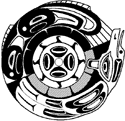
Navigating the Night Sky:
Planetarium show for Middle School Children
Related Links
http://www.cnde.iastate.edu/staff/swormley/eo/eo.html
The Educational Observatory (incorporating one or more ATFs), when completed, will provide K-12 students with an opportunity to do real science (observational astronomy) from their classrooms via the Internet. These dozens of web pages are broadly categorized into areas noted on the left. The categories Observing and Education are further organized by topics.
http://www.quest.arc.nasa.gov/home/index.html
Meet the people of NASA and look over their shoulders as they make NASA's goals a reality. Whether in the area of aerospace design or training for space walks, NASA Quest is a rich resource for educators, kids and space enthusiasts who are interested in meeting and learning about NASA people and the national space program. NASA Quest allows the public to share the excitement of NASA's authentic scientific and engineering pursuits like flying in the Shuttle and the International Space Station, exploring distant planets with amazing spacecraft, and building the aircraft of the future.
http://www.athena.ivv.nasa.gov/curric/space/planets/index.html
Our Solar System:
The Planets and Their Motion
http://cse.ssl.berkeley.edu/
Space science is enjoying a golden age! Definitive evidence of the existence of black holes, the discovery of planets outside the solar system, and the understanding of how our active Sun affects Earth's space environment, are just a few examples of the exciting discoveries that astonish and fill us with wonder. Space scientists are poised to answer fundamental questions about the destiny of the cosmos and the possibility of life beyond Earth. Solving the mysteries of the Universe - what a wonderful way to spark our imaginations!
http://www.nsf.gov/
The National Science Foundation funds research and education in science and engineering. It does this through grants, contracts, and cooperative agreements to more than 2,000 colleges, universities, and other research and/or education institutions in all parts of the United States. The Foundation accounts for about 20 percent of federal support to academic institutions for basic research.
http://www.soest.hawaii.edu/SPACEGRANT/class_acts/index.html
More than 25 hands-on science activities are provided in classroom-ready pages for both teachers and students for exploring Earth, the planets, geology, and space sciences.
http://btc.montana.edu/ceres/
Center for Educational
Resources (CERES) Project


 © 1999 University of Washington
© 1999 University of Washington
Revised: 22 August, 2001
